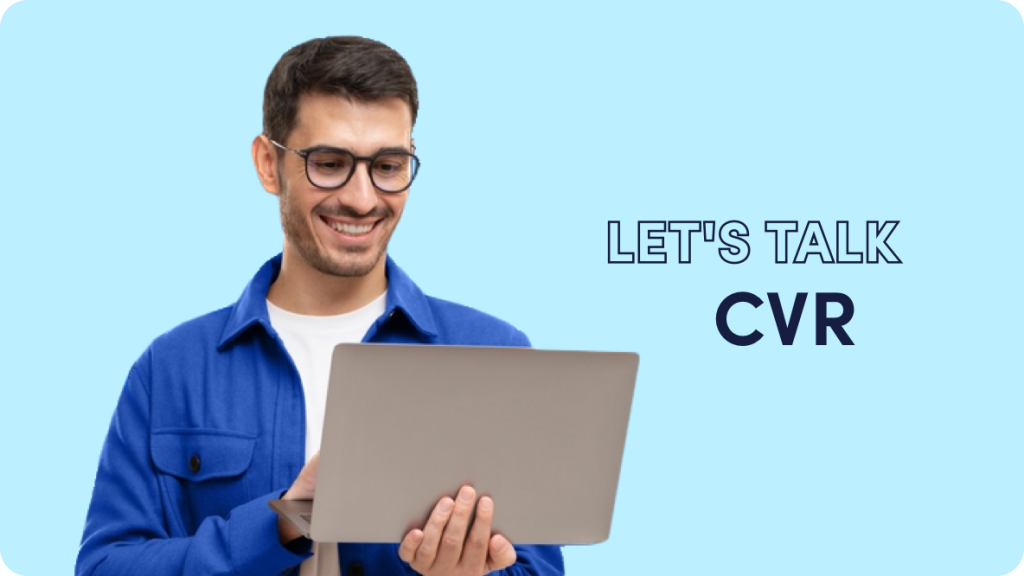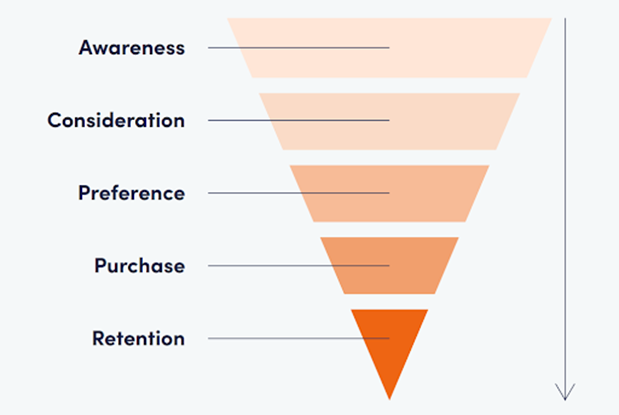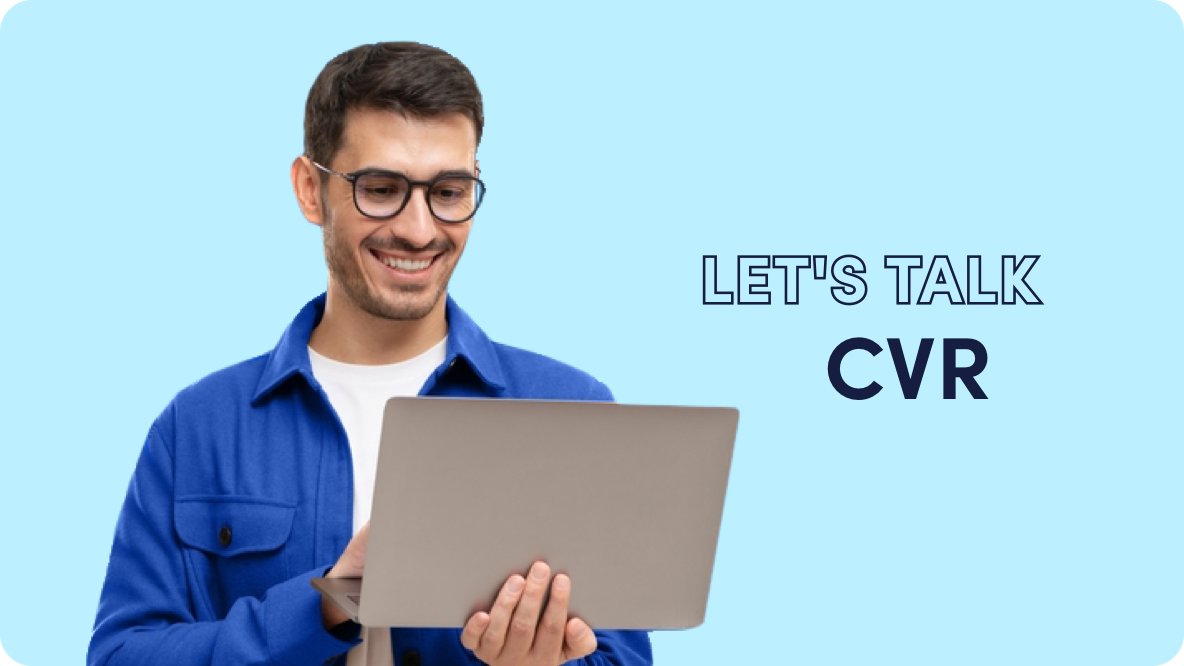Conversion Rate Marketing: How to Focus Your Efforts and Get Great CVR

Sign-ups, sales, and form submissions all have one thing in common: holy grail status. When a prospect turns into a customer, it means they have taken a specific action – a ‘conversion’. Businesses thrive on conversions, which requires a healthy marketing pipeline from consideration to purchase. A high conversion rate in digital marketing is a fundamental measure of success.
Just look at Spotify.
Spotify offers a free version and a paid premium version, with the goal of converting as many active listeners to the premium version as possible. Back in 2019, they had 217 million subscribers, 100 million of which were premium users. Not only did this put them in the top spot in the music streaming market, but it was also a victory for the company’s marketing team.
Why?
Because their conversion rate was solid.
Since then, their listener base has more than doubled. How does Spotify achieve this?
By nailing every level of their conversion rate optimization strategy. From compelling CTAs to a well-crafted user journey, the team at Spotify clearly understands their conversion goals and tailors their customer experiences to promote conversions every step of the way. All without deterring their free users.
In this article, we’ll explore some essential strategies and best practices for optimizing your CVR for high success. We’ll explore how to create compelling conversion campaigns, get acquainted with the conversion funnel, and see these principles in action with real-world examples.
Customers who want what you are offering are out there. Now, let’s go get them.
Understanding Conversion Rate Marketing
First things first, what is conversion rate, and how do you know if yours is solid?
“Conversion rate, also known as CVR, is a marketing metric that tells you how many users are converting on your website. A conversion is when a user performs a pre-defined action (or call to action) on your website or other online asset.”
Outbrain Glossary
Knowing your CVR is like taking the pulse of your landing page or online campaign. It indicates how well your layout, content, and product are driving interested customers to complete the action you want them to take. Conversions can be anything from newsletter sign-ups to outright sales, depending on how you define success for your business.
The conversion rate formula is simple:
Conversions / Views = Conversion Rate
Let’s say you promote an ebook on your homepage, and your conversion goal is a download.
In a day, let’s say you receive 100 website visitors, and 10 of them opt to download the lead magnet. According to the conversion percentage formula, your CVR would be 10% for that action. Broadly speaking, that would be excellent!
Across all industries, website conversion rates are ‘good’ if they fall between 2% and 5%. However, knowing how your CVR measures up comes from analyzing a few different factors, including the value of your chosen action, your business’s past performance, and your industry CVR benchmark.
The Conversion Funnel: How Conversions Happen
Consumers take their time to make decisions. In fact, 96% of all website visitors who land on your page simply aren’t ready to commit to a purchase yet. They need nurturing, and that’s where the conversion funnel comes in.
A conversion funnel – also known as a ‘marketing’ funnel – is a model that maps potential customers against how far down that road they are. It looks a little something like this:

Source: Full-Funnel Marketing Strategy Guide
Top funnel: Getting to know your business
The ‘top’ of the funnel – the Awareness stage – uses broader marketing strategies to capture consumers who may not yet have heard about your brand or product.
At this stage, it’s important to cast a wide net and reach as many potential customers as possible. The goal is to generate brand awareness and recognition by focusing on your audience’s needs and pain points, and then offering your solution in an insightful way.
The Strategy: Build trust by offering value. Tactics like social media marketing, content marketing, and native advertising allow you to cast a wide net while targeting audiences likely to consider your brand. Measure impressions, traffic, and click-through rates (CTR) to keep an eye on your top-funnel campaign health.
Mid-funnel: Time for nurturing
The ‘middle’ of the funnel – Consideration and Preference – is when customers become more familiar with and interested in your brand through social media, online advertising, email marketing, and content marketing such as blogs and guides.
The middle of the funnel is a hot spot for ‘drop offs’ – potential customers who lose interest and don’t pursue their connection with the company or product. That’s why the mid-funnel is all about ‘nurturing’. At this stage, the audience is already aware of your brand, and the goal here is to get them to stay in the funnel and gently convince them to move along toward the conversion, such as purchasing a product or booking a sales call.
The Strategy: Provide insightful content and meaningful interactions relevant to your customer. Your target audience at the stage is smaller, so put time and energy into creating content like webinars, ebooks, and social proof to demonstrate your value and relevance to them. Watch your Cost-per-Lead and engagement rates to understand how well your content is aligning with their needs.
Bottom funnel: Where the conversions happen
Finally, the ‘bottom’ of the funnel – Conversion/Purchase – is the destination. By this stage, the potential customer has been persuaded and nurtured to the point where they want to take action. Whether it is making a purchase, downloading an ebook, or signing up for a webinar, this is the moment where they convert from a prospect in your funnel to a lead or customer.
The Strategy: Nudge customers to convert by offering relevant, time-sensitive deals that appeal to their needs. Retargeting interested customers with email marketing and even SMS marketing are good tactics here. Keep an eye on conversion rates and your customer acquisition cost to balance effort with reward.
Post-funnel: Bring them back for more
Don’t forget about the post-funnel stage, which is called Retention or Advocacy. For B2C or B2B businesses, repeat customers are a critical part of maintaining and growing your revenue stream. Beyond their own engagement with your business, loyal customers become your ambassadors, recommending you to others via word-of-mouth, and increasing conversion rates more than any other factor.
Conversion rate marketing is all about analyzing and optimizing your marketing funnel at every stage. But how to optimize? This will depend on your conversion goals.
Setting Conversion Goals
Setting clear, specific conversion goals is the most important thing you can do to define, map, and optimize your marketing funnel. After all, you have to know where you want to go in order to get there.
Conversion goals are the specific actions that you want your customers to take. There are several types of conversion goals, so the strategies and tactics to help you achieve it will vary.
Let’s explore some of the common types of conversion goals:
- Purchases: The customer buys a product or service.
- Bookings: The customer books a service or meeting.
- Subscriptions: The customer subscribes to a product or service (free or paid).
- Sign-ups: The customer registers for an email newsletter, event, or webinar.
- Downloads: The customer downloads a guide, ebook, product, or other digital asset.
Different campaigns have unique conversion goals based on their objectives. A business may run several marketing campaigns at the same time with different conversion goals for different parts of their funnels.
Now that you’ve settled on a conversion goal, the next question is: how can you optimize your conversion rate?
Conversion Rate Optimization Strategies
The conversion funnel is complex, and there are several ways you can optimize your CVR. While many of these can be done independently, it’s best to incorporate multiple strategies into your conversion campaigns to get the best results.
Let’s take a look at some recommended strategies for conversion rate optimization:
A/B testing of campaigns or campaign elements
A/B testing offers valuable data as to what your potential customers respond to. Test different email subject lines, calls to action (CTAs), imagery, and messaging to watch the fluctuations in customer response.
The better a given element performs, the more likely it’s going to net conversions from your target audience. Make sure to pay attention to demographic and behavioral data when A/B testing to ensure you’re optimizing for the right audience.
Website and landing page design improvements
Your website and landing page are like the delivery of a promise. When prospective customers click through from a SERP or native ad, make sure you’re immediately providing the value they’re seeking.
Keep an eye on session time, bounce rate, and pages per session to track your customers’ journey to your conversion goal (or, as the case may be, away from it).
Crafting compelling calls to action (CTAs)
The right CTA puts your conversion goal front and center! This will differ depending on the specific action you want them to take. Check out these tips and examples for crafting great CTAs.
Enhancing website speed and mobile responsiveness
Frustration and friction from slow websites are major contributors to high bounce rates. Give your potential customers or leads the best chance of converting by ensuring your site is mobile-optimized and highly responsive.
Personalization and segmentation techniques
Segmenting your audience is the best way to manage and optimize your CVR strategies on a granular level. Rather than trying to make broad strokes with marketing changes, understand how your customers differ on a behavioral or demographic level.
For example, if customers don’t know your brand very well, then a conversion goal to “Buy Now” or “Book a Sales Call” might seem pushy and drive them away. Instead, provide them with relevant content and interactions that give them value and address their pain points. This is a much better way to drive them down the funnel.
Testing and Optimization
The digital landscape is dynamic, and what works today may not work tomorrow. The most important principle of CVR optimization is to keep going. Keep a finger on the pulse of your conversion campaigns, and make optimization a continual practice. Be willing to experiment, and be open to what the data tells you. There are several testing and optimization tools that you can use to understand your audience behavior and improve the funnel experience.
Tools to help you
- Google Analytics: The primary hub for tracking your conversion analytics. Allows you to set conversion goals, segment target audiences, and track behavioral metrics like bounce rate against your goals to see potential optimizations.
- HotJar: A heat-mapping software that provides a visual representation of your customer’s journey through your website. Helps identify sticking points or bounce points where you can optimize your site’s performance to encourage conversions.
- BuzzSumo: A content marketing tool that offers viral content suggestions based on audience characteristics. Build authority and offer mid-funnel value to drive customers to convert.
How to Boost Conversion Rate: A Case Study
Let’s examine a conversion rate marketing strategy example and see how to optimize for CVR in the real world.
Marc O’Polo approached Outbrain with a challenge. They wanted to attract as many online users as possible to their web store and boost sales.
Outbrain worked with the exclusive Swiss lifestyle and fashion brand to craft ad creatives to address different segments of their target audiences. Using Conversion Bid Strategy (CBS), which leverages machine learning and sophisticated modeling to target customers based on specific campaign goals, Marc O’Polo achieved an incredible 1500% return on ad spend.
How? Because they were targeting the right people with the right message to suit the conversion goal. The chosen CBS mode automatically adjusted ad bids to target the audience with the highest likelihood of conversion. This reduced the amount that the brand was spending on audience segments unlikely to convert, while clearly guiding high-potential customers to the bottom of the funnel.
Get Focused, Get Great CVR
You don’t need millions in revenue and a full-scope marketing team to optimize your conversion rate. Embracing any of the conversion rate marketing practices above will give you a competitive edge, because you’ll be giving potential customers what they want most, at every stage of the funnel.
Deliver value well, to the right people, and keep checking on your strategy to ensure it’s performing. The online world’s fast, and ever-dynamic, sure. But you? You’re ready to take it on.


